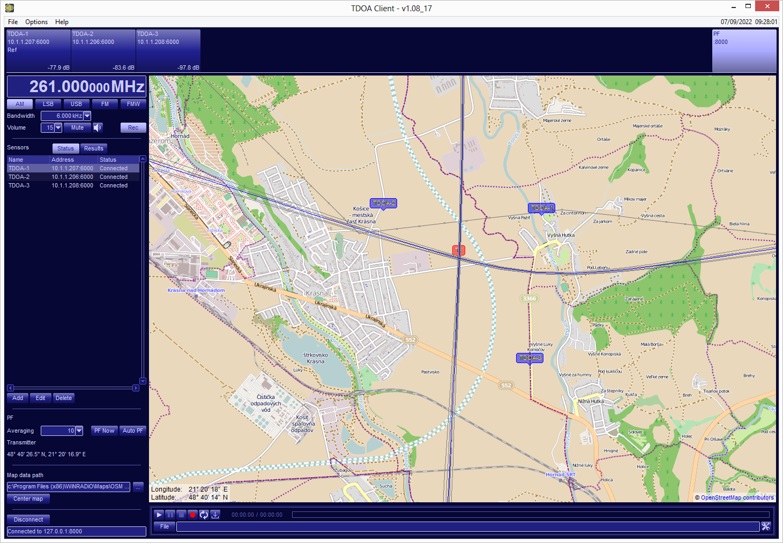Software
The software component of the system includes sensor software running within the sensor receiver and processing systems, along with server software and client software typically installed on operator sites. For smaller installations, the server and client software can be conveniently operated on a single workstation, streamlining the setup process.
The software offers a wide range of features designed to enhance the user experience. The results of the position estimation process are displayed on an interactive map, providing users with a visual representation of the estimated positions and information about the estimation quality. Additionally, the software enables the display of sensor locations, offering a comprehensive overview of the network. Detailed maps with various levels of zoom and customization options are readily accessible, allowing users to explore specific areas of interest.
To accommodate different operational preferences, the position estimation process can be performed in either manual or automatic mode, providing flexibility and meeting diverse user requirements.

Our software also includes comprehensive network management functionality, empowering users to oversee and manage the entire sensor network. This functionality allows for continuous monitoring of the status and health of individual sensors, ensuring optimal performance and resolution of any potential issues. With our software suite, users benefit from a robust and user-friendly interface that streamlines the operation, monitoring, and management of the sensor network. It provides a powerful toolset for efficient and effective utilization of the system's capabilities.
|